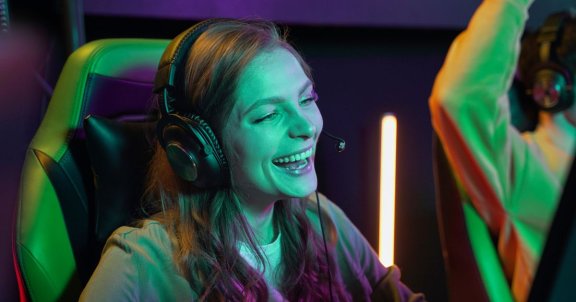Having Lag? Learn How to Troubleshoot Gaming Network

Gaming is supposed to be fun—whether you’re deep into a competitive match or just trying to relax with friends. But nothing’s more frustrating than your game freezing mid-round, lagging when you need quick reactions, or updates dragging on forever. Even with quality Internet, issues like these can ruin the experience.
In this guide, we’ll explain what causes these issues, how to troubleshoot them, and how to level up your setup for a smoother gaming experience.
Understanding the Problem: Lag Meaning
Lag refers to a noticeable delay between a player's action and the game’s response. You might press a button to move or shoot, but there’s a delay before anything happens on screen. In fast-paced games, that split-second lag can mean the difference between winning and losing. For example, if you're playing a shooter and your character freezes while opponents keep moving, you’re likely to get knocked out without being able to defend yourself.
Lag can be caused by high latency, unstable network connections, or a device that's overloaded with background processes. Sometimes, even if your Internet works fine for streaming or browsing, games behave differently because they require consistent, real-time data flow. Now that we know what lag is, let’s dig into the network side of things to see how it impacts your gaming performance—and how you can fix it.
Gaming Network Latency
Latency is the time it takes for data to travel from your device to a game server and back. It's usually measured in milliseconds (ms). The lower your latency, the quicker your commands register in the game. Anything under 50ms is generally great for gaming, while over 100ms can start to feel sluggish.
According to ExitLag’s overview of gaming latency, common causes include inefficient routing between your system and the game servers, overloaded networks, or even issues on the game server’s end. Your data might be taking a longer path than necessary, similar to driving the long way around town instead of taking a shortcut. This is why reducing latency is key to smoother, more responsive gameplay.
How to Troubleshoot Gaming Network
It’s especially confusing when everything else online works fine, but your games lag or fail to connect properly. Online games often rely on specific ports and protocols that can be blocked or restricted by firewalls, antivirus programs, or certain router settings. These issues can interfere with the game while leaving things like streaming or browsing unaffected.
Some ways to troubleshoot include:
- Check your firewall and antivirus settings. Make sure your game isn't being blocked or restricted.
- Update your network adapter drivers. Outdated drivers can cause connectivity problems.
- Try a different DNS server. Services like Google DNS (8.8.8.8) or Cloudflare (1.1.1.1) can sometimes improve game connections.
- Look for software conflicts. Apps like VPNs or bandwidth-heavy background tools can affect how well games connect and perform.
Every system may differ slightly, so the exact steps might not be the same across all devices, but these general checks are a solid starting point.
How to Fix Internet Issues for Gaming
If your network seems fine but games are still struggling, your Internet connection might be the root of the problem. Gaming requires not just speed, but also stability and consistency—especially when multiple devices are sharing the same network.
Here are a few common Internet-related issues that impact gaming:
- Too many devices connected. Streaming, video calls, and downloads can eat up bandwidth, slowing down your game.
- Insufficient speed. If your Internet plan isn’t fast enough, your connection might not keep up with game data in real time.
- Old equipment. An outdated modem or router may not support your current needs, especially if you’ve added more devices over time.
- Peak time slowdowns. During high-traffic hours, speeds may dip if your network can’t handle the load.
One quick fix you can try is resetting your modem and router. Just unplug both from power, wait for about 30 seconds, then plug them back in. Give them a minute or two to reboot fully. This simple step can clear out temporary issues and reestablish a clean connection.
Optimize Your Gaming Network
For gamers who want the smoothest, most responsive connection possible, using a dedicated gaming network optimizer like WTFast can make a big difference. WTFast works by creating a direct, private route between your device and the game server, reducing the number of network "hops" your data has to travel. This optimized path helps eliminate lag spikes, reduce packet loss, and lower ping—especially useful for competitive online play.
Unlike traditional VPNs, WTFast doesn’t encrypt your traffic or slow things down. Instead, it prioritizes gaming data to ensure your actions in-game happen exactly when you intend.
Upgrade Your Gaming Network With Buckeye
If you're ready to take your gaming experience to the next level, Buckeye Broadband offers Fiber Internet, a high-performance solution with faster speeds, lower latency, and more reliable performance. It’s ideal for gamers who want smooth, consistent gameplay even during high-demand hours.
Buckeye also offers WTFast, a powerful gaming network optimizer that creates a private, direct path to game servers for PC gamers. This helps reduce ping, minimize packet loss, and eliminate frustrating lag. With WTFast, your gaming traffic is prioritized so you can focus on playing, not waiting.
Want to learn more or upgrade your setup? Call 419.724.9800 to speak with a Buckeye Broadband expert and find the best gaming Internet package for your needs.
